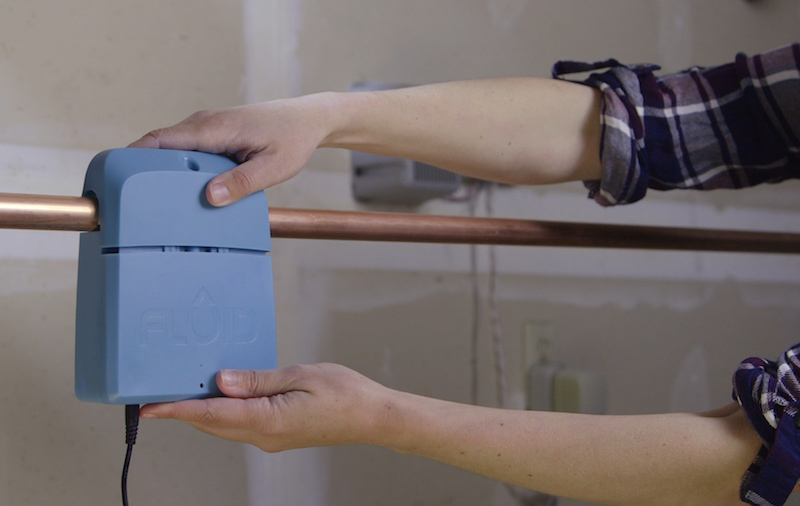Ingenious Solutions for Very Early Detection of Water Leakages in Structures and Framework
From innovative leakage discovery innovations to the deployment of IoT sensors for real-time surveillance, the landscape of leakage prevention is progressing swiftly. Automated water flow analysis systems are improving exactly how leakages are recognized and addressed, leading the means for an aggressive approach to water leakage detection.
Advanced Leakage Detection Technologies
Advanced leak detection modern technologies, equipped with innovative sensing units and formulas, play a critical function in promptly determining and identifying water leakages in numerous settings. Electro-magnetic sensing units can determine modifications in electromagnetic fields created by water, offering yet another layer of leakage discovery ability.

IoT Sensors for Real-Time Surveillance
In the realm of modern water leakage discovery, the combination of IoT sensors for real-time surveillance represents an essential improvement in improving positive leak detection capabilities. These sensing units supply continual tracking of water supply, supplying real-time data on water circulation rates, stress variants, and temperature adjustments. By leveraging IoT modern technology, these sensing units can detect even the smallest abnormalities in water use patterns, making it possible for early recognition of possible leakages prior to they escalate into major problems.
IoT sensing units transfer information to a centralized system, where advanced formulas analyze the information and create informs or alerts when abnormalities are detected. This real-time surveillance ability allows homeowner or facility supervisors to quickly address leaks, decreasing water damages, reducing repair service prices, and conserving water resources.
Furthermore, IoT sensors can be integrated with building monitoring systems, permitting automatic actions to identified leaks, such as shutting down water valves or activating pumps to mitigate the influence of leakages. Generally, the application of IoT sensors for real-time surveillance considerably boosts the efficiency and efficiency of water leak discovery in buildings and framework.
Artificial Intelligence Algorithms for Leakage Forecast

One secret benefit of using artificial intelligence for leakage forecast is its ability to continually find out and boost its accuracy over time. As even more information is gathered and fed into the algorithm, it can improve its predictions and adapt to changing conditions, eventually boosting the integrity of leakage discovery systems.
In addition, equipment understanding algorithms can assist in determining refined signs of leakages that may go unnoticed by traditional surveillance techniques. water leak detection. By evaluating complicated data sets in real-time, these algorithms can supply early warnings and alerts, permitting for prompt intervention and preventive maintenance to mitigate prospective water damage and associated prices
Making Use Of Thermal Imaging for Leakage Discovery
Thermal imaging technology uses an encouraging method for discovering water leakages in various systems and frameworks. By utilizing infrared radiation and temperature variations, thermal imaging cams can identify covert leakages that are not easily visible to the nude eye. When water runs away from pipes or structures, it Look At This frequently transforms the temperature level of the bordering area, developing temperature level differentials that thermal cams can capture. These temperature abnormalities are after that equated into noticeable images, highlighting the specific location of the leak.
Among the essential advantages of thermal imaging for leakage detection is its non-intrusive nature. Unlike standard approaches that may require getting into walls or floorings to find leakages, thermal imaging enables non-destructive testing. This not just conserves time and decreases costs but also decreases interruption to the building or framework being examined. Additionally, thermal imaging can promptly scan large areas, giving a detailed overview of prospective leakage resources in a timely way. Overall, the usage of thermal imaging modern technology enhances the performance and precision of water leakage discovery, making it a valuable tool for keeping the honesty of structures and facilities.
Automated Water Flow Analysis Systems
How can computerized water circulation evaluation systems revolutionize the discovery and management of leakages in various systems and infrastructures? Automated water flow analysis systems offer a positive technique to leak discovery by continuously checking water flow rates and patterns. By developing standard data, these systems can swiftly determine variances that may suggest a leakage, enabling timely treatment to stop considerable damages.
These systems make use of innovative algorithms to evaluate real-time data and offer prompt alerts when anomalies are spotted, allowing for speedy activity to be taken. Furthermore, automated water flow evaluation systems can be incorporated with building administration systems or IoT systems, boosting overall effectiveness and making it possible for remote monitoring abilities.
Furthermore, the data collected by these systems can be used for predictive maintenance purposes, helping to identify prospective powerlessness in the framework prior to leakages happen. Generally, the application of automatic water flow analysis systems can significantly improve leakage discovery and monitoring methods, eventually resulting in see cost savings, reduced water wastefulness, and raised sustainability in structures and facilities.

Verdict
To conclude, the combination of sophisticated leakage discovery technologies, IoT sensors, artificial intelligence algorithms, thermal imaging, and automatic water circulation analysis systems uses cutting-edge solutions for early discovery of find more water leaks in buildings and infrastructure. These technologies allow real-time tracking, prediction of leaks, and effective detection techniques to stop water damage and waste. Executing these options can aid in keeping the integrity and sustainability of water supply in numerous setups.